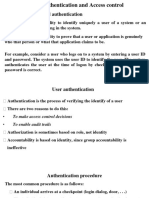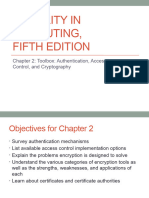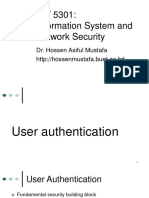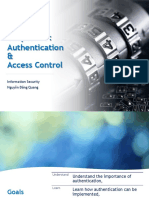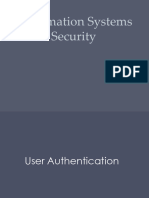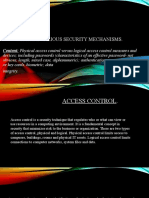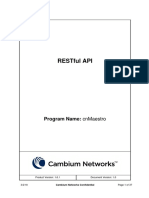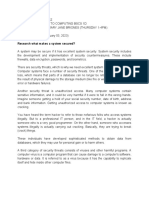0% found this document useful (0 votes)
78 views43 pagesLec 9 - Authentication Techniques
The document discusses various authentication concepts including passwords, tokens, biometrics, and CAPTCHAs. It describes different forms of authentication like something you know (e.g. passwords), something you have (e.g. tokens), and something you are (e.g. biometrics). The document also covers authentication models from one-factor to multi-factor authentication and discusses how CAPTCHAs are used to distinguish humans from robots on websites.
Uploaded by
gCopyright
© © All Rights Reserved
We take content rights seriously. If you suspect this is your content, claim it here.
Available Formats
Download as PDF, TXT or read online on Scribd
0% found this document useful (0 votes)
78 views43 pagesLec 9 - Authentication Techniques
The document discusses various authentication concepts including passwords, tokens, biometrics, and CAPTCHAs. It describes different forms of authentication like something you know (e.g. passwords), something you have (e.g. tokens), and something you are (e.g. biometrics). The document also covers authentication models from one-factor to multi-factor authentication and discusses how CAPTCHAs are used to distinguish humans from robots on websites.
Uploaded by
gCopyright
© © All Rights Reserved
We take content rights seriously. If you suspect this is your content, claim it here.
Available Formats
Download as PDF, TXT or read online on Scribd
/ 43


